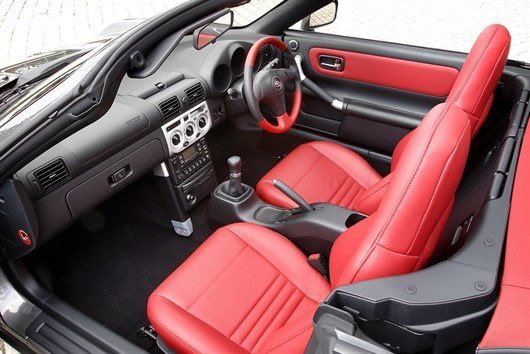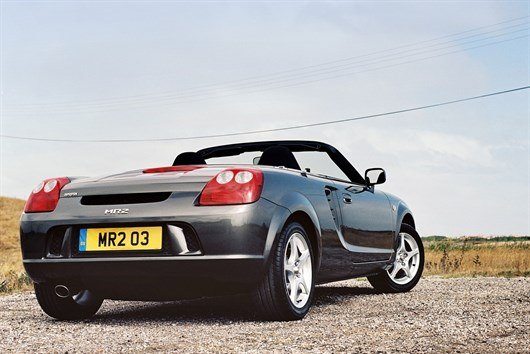Future Classic Friday: Toyota MR2 Mk3

It will never win any awards for practicality, but the third generation Toyota MR2 is still a great car - albeit one with some very obvious flaws.
Launched in 2000 (or 1999 in its home market of Japan), the car was almost identical to the MR-S concept shown at the 1997 Tokyo Motor Show. Indeed, the newcomer was sold as the MRS in Japan, rather than MR2.
In many ways, the difference in name was logical, for as a concept the new MR2 was very different to the second generation car that it replaced, the only real commonality between the two being the mid-engined layout.
While the earlier car had evolved from sports car into sports-oriented grand tourer (and an extremely pretty one, at that), the new model was a back-to-basics roadster in the mould of a Lotus Elise.

The car’s chief engineer, Tadashi Nakagawa, said it would break 'the cycle of growth', referring to the habit of successive vehicle generations getting ever larger.
Everything about the new car would be smaller – overall proportions, engine size, power, kerb weight and price. It would also be much simpler to produce, with all markets sharing a similar specification.
True to his word, when it was launched, the new car weighed just 960kg - less than a BMW Mini or, indeed, an MR2 Mk1. One of the main reasons behind this was the removal of the rear bulkhead, with the torsional rigidity of the rear end incorporated into the design of the bodywork.
From a cost and weight perspective, a great idea, but it did mean that the MR2 went without any form of a boot. Instead, buyers got a 78-litre storage compartment behind the seats (about the same size as a contemporary Range Rover’s glove compartment), and enough room for a couple of small bags in the front hatch alongside the spare wheel. For road trips, then, you had to travel light.

Powertrains were simplified, too. Only one engine was used: an all-alloy 1.8-litre DOHC 16v VVT-i unit that was also used in the seventh-generation Celica. It developed 138bhp, which may not sound huge, but thanks to the MR2’s diminutive mass, it had the best power-to-weight ratio in its class.
In sports car terms, then, the third generation MR2 ticked all the boxes. It had dart-like responses, a revvy engine and was quick off the mark. The steering was sharp, and it loved being thrown around. On-the-limit handling was a touch unpredictable, but overall, it was a lively and entertaining performance car for not a huge amount of outlay. Just what a sports car should be.
Today, they’re cheap as chips. Less than a grand will get you behind the wheel of well-used example, and they’re more fun and more durable than an MGF or a Mazda MX-5. Such pleasures come with an element of compromise, of course, but that's just a part of classic car ownership.
Comments
Compare classic car insurance quotes and buy online. A friendly service offering access to a range of policies and benefits.


 Craig Cheetham
Craig Cheetham
 NEC classic motor show 2020 postponed due to Covid 19 concerns
NEC classic motor show 2020 postponed due to Covid 19 concerns
 Classic car auction house Coys goes into administration
Classic car auction house Coys goes into administration
 Motor racing great Sir Stirling Moss dies aged 90
Motor racing great Sir Stirling Moss dies aged 90
 Alfa Romeo anniversary races set for Silverstone
Alfa Romeo anniversary races set for Silverstone
 Government to make E5 fuel available for classic owners
Government to make E5 fuel available for classic owners
 Plans to introduce cleaner fuel could damage more than a million classic cars
Plans to introduce cleaner fuel could damage more than a million classic cars
 Top 10: Classic cars from the Gulf motor racing heritage collection
Top 10: Classic cars from the Gulf motor racing heritage collection











glidermania on 21 July 2017
I remember a Toyota salesman telling me they were pitching the car at buyers who would like a boxter. I just shook my head and walked out the showroom at such boll*cks.on 21 July 2017
I have one tweaked with a turbo to 238bhp. It is boll*cks........The dogs!!!. Have toured all round Europe in it with the wife. No problems with luggage space when you're used to touring on a motorbike. D.MR2MAD on 30 July 2017
I recall a well respected motor garage owner telling me in no uncertain terms that over the years he'd owned 2 Boxters AND 3 MR2 Roadsters and if he was to choose again he'd have no hesitation in choosing the MR2. They're Rock solid, reliable and a whole heap of FUN! However if you're in a position to and happy to pay a premium for the Porsche badge, far fewer mpg and all the repair and service costs that go with it then by all means I thoroughly recommend you buy a Boxter!
Add a comment